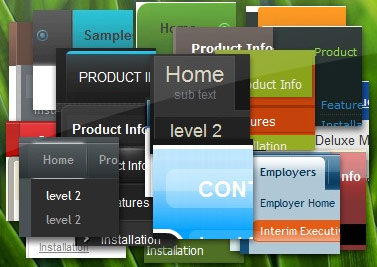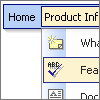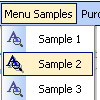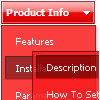Recent Questions
Q: Thank you for such an excellent product. I have a question pertaining to the submenu items in your tree-menu line. My menus are 540px wide and contain lots of text with good sized pictures (icons). Can I use an iframe tag inside of the css menu submenu instead of simple text with this icon?
A: You are able to paste any html code within items.
So you can paste a form too.
For example:
var menuItems = [
...
["||<nobr><FORM method=GET action='http://www.google.com/custom'><input name='as_q' value='search
the web' size=15 style='font-size:10'> <INPUT type=hidden name=cof
value='LW:144;L:http://domain.edu/images/sulogo.gif;LH:45;AH:center;GL:0;S:
http://domain.edu;AWFID:e01cb67b8afe383e;'></form></nobr>","",
"images/icons/search.gif", "", "", "", "", "2", "", "", "",],
Q: Why can't I have more than 5 buttons in Vista 1?
If I add any the color proporties do not show up.
A: You should assign Individual style to the new item.
Please, click on the new item.
In the window "Item Parameters" you should assign to Item Style"Top Item".
Q: Does deluxe menu need Java Virtual Machine installed on the computer that is trying to view the web site with a deluxe menu on it?
A: This menu doesn't require any external plug-ins to be installed.
If you can't see the menu in all browsers you should change security browser settings to allow Javascript on pages you load.
When your security browser settings doesn't allow Javascript onpages you load you can't see a dynamic page content.
Q: Is there a way to hide a menu options using either CSS or the java api based on the site user for the mouseover menu?
A: Deluxe Menu supports Javascript API.
You can find more info here:
http://deluxe-menu.com/dynamic-functions-sample.html
You can try to use API functions in that case:
function dm_ext_changeItemVisibility (menuInd, submenuInd, itemInd, visibility)
To disable items you should set the target parameter to "_".
You can try to use the following function
function disable() {
dm_ext_changeItem(0, 1, 1, ["", "", "", "", "", "_"]);
}
to disable your items.










